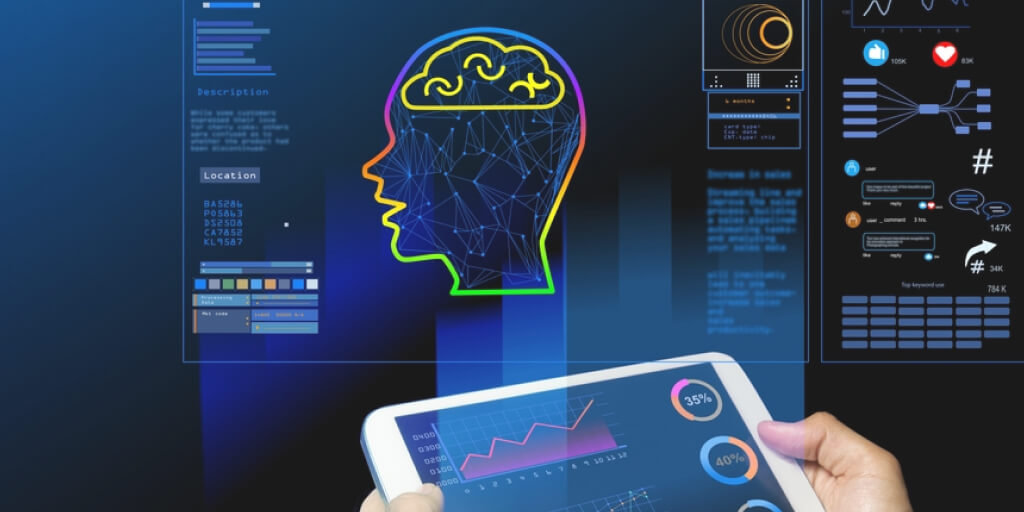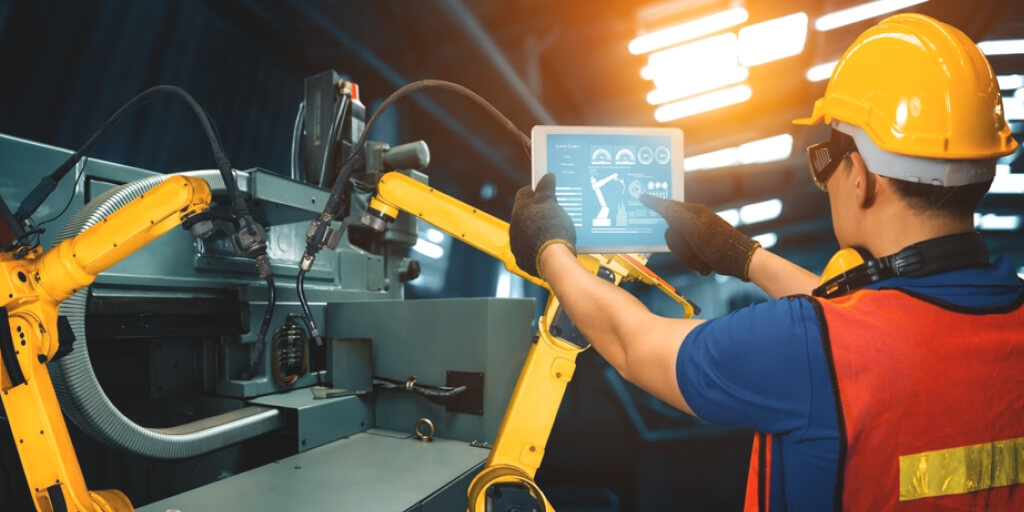Table of Contents
- Introduction
- Integrating AI-Driven UX Research for Improved User Experience
- The Role of Machine Learning in UX Design
- Benefits of AI-Driven UX Research
- Leveraging Predictive Analytics for User Experience
- Automated User Insights for Streamlined Research
- AI Tools for UX Design and Development
- Enhancing Personalization Through AI
- Overcoming Challenges in AI-Driven UX Research
- Future Trends in Machine Learning for UX
- How Blue Whale Apps Can Help
Introduction
How can businesses stay ahead in a competitive market? Incorporating AI-driven UX research and predictive analytics is central to transforming user experiences and driving success in modern digital landscapes.
It’s a game-changer.
These advanced methodologies enable organizations to anticipate user needs and deliver personalized interactions, ensuring a seamless and engaging journey.
Integrating AI-Driven UX Research for Improved User Experience

Integrating AI-driven UX research allows organizations to harness the power of automation. Machine learning in UX can rapidly analyze vast amounts of data to uncover patterns and insights.
Such efficiency not only saves time but also uncovers nuances often missed by traditional methods.
Leveraging automated user insights empowers businesses to refine interfaces and enhance user satisfaction. Predictive analytics further augments this process by foreseeing user behaviors, preferences, and trends.
By marrying AI tools for UX with innovative design strategies, companies can craft experiences that feel intuitive and personalized—thus positioning themselves at the forefront of user-centered innovation. This approach not only meets but exceeds user expectations, cultivating loyalty and driving sustained growth.
The Role of Machine Learning in UX Design

How can machine learning revolutionize the landscape of user experience design?
Since 2016, forward-thinking firms have leveraged cutting-edge machine learning in UX to generate sophisticated insights from extensive user data, leading to more intuitive designs.
Today, it’s not enough to rely solely on intuition; designers must harness the analytical power of machine learning in UX to elevate their craft.
Machine learning enables teams to dissect user behaviors, detecting patterns that inform decision-making. It’s akin to having a 3-dimensional view of user preferences and pain points, allowing unparalleled precision in the design process.
Such advancements not only drive user satisfaction but also set new standards for excellence in the realm of digital experiences.
Benefits of AI-Driven UX Research
AI-driven UX research promises substantial improvements in user engagement and satisfaction.
By harnessing AI’s transformative power, companies can analyze vast data sets with unparalleled accuracy, uncovering nuanced user behavior and preferences. This scientific approach facilitates the creation of designs that resonate deeply with users, thereby increasing engagement and retention rates.
Furthermore, this technology enhances the speed and efficiency of user research. Automated processes provide instant, actionable insights, allowing UX teams to iterate rapidly and keep up with the ever-evolving expectations of modern users.
Ultimately, AI-driven UX research enables organizations to make data-driven decisions that elevate user satisfaction, ensuring that digital interfaces not only meet but surpass user anticipations. This perpetual advancement fosters customer loyalty and propels continuous business growth.
Leveraging Predictive Analytics for User Experience

Leveraging predictive analytics for user experience revolutionizes how organizations anticipate user needs, preferences, and behaviors. By integrating machine learning algorithms, they can forecast patterns that help in crafting anticipatory and personalized experiences.
These predictive capabilities enable companies to stay ahead, proactively tailoring their interfaces to match user expectations, thus ensuring elevated satisfaction.
Forecasting User Behavior

Advanced machine learning models predict user behavior, enabling finely tuned user experiences. These insights are derived from extensive data analysis, ensuring accuracy and relevance in UX design improvements.
With AI-driven UX research, organizations gain a unique ability to foresee user actions, enhancing proactive adaptive interfaces. This foresight results in significantly improved engagement and retention rates.
Predictive analytics reduced churn rates by 25% in leading tech firms.
By predicting user behavior, companies transform potential challenges into opportunities. This forward-thinking approach not only optimizes current interactions but also strategically shapes future user engagements, creating a competitive edge in the marketplace.
Anticipating User Needs

Accurately predicting user needs is transformative.
By leveraging machine learning in UX and automated user insights, organizations can anticipate what users want even before they do. This preemptive understanding allows businesses to design interfaces that are not only aesthetically pleasing but functionally intuitive, leading to seamless user interactions and enhanced satisfaction.
AI-driven UX research offers unparalleled foresight.
Businesses equipped with predictive analytics and AI tools for UX can harness these technologies to decipher emerging patterns in user behavior. By doing so, they can stay agile, continuously refining their platforms to meet users’ evolving needs.
Through such innovative strategies, professionals can significantly reduce user frustration, driving higher retention rates and fostering brand loyalty. In a world where user experience is paramount, this anticipatory capability becomes a cornerstone in achieving digital excellence and sustained success.
Automated User Insights for Streamlined Research
Automated user insights revolutionize traditional research processes by delivering faster, more accurate data, enhancing researchers’ efficiency, and empowering more informed decision-making.
With AI tools for UX, organizations can automate the tedious aspects of gathering and analyzing user insights (e.g., surveys) to focus on creating impactful user experiences. This shift not only accelerates the research phase but also ensures that the collected insights are both rich and actionable.
By leveraging “automated” and “user insights” together, professionals achieve a higher level of detail in their user research.
Real-Time Data Collection

Real-time data collection represents a transformative leap in UX research, offering detailed insights as users engage with digital products.
This approach dramatically shortens the feedback loop.
Previously, user behavior insights were delayed, causing gaps in understanding.
Now, AI-driven UX research tools revolutionize this process.
These tools capture and analyze user interactions instantly, allowing for immediate adjustments to optimize the user experience. By continuously refining product features based on real-time data, companies can exceed user expectations.
Ultimately, the agility gained through real-time data collection empowers organizations to stay ahead in a dynamic digital landscape.
Efficient Data Analysis

Efficient data analysis is crucial in gaining valuable user insights swiftly and accurately.
Leveraging AI-driven UX research, professionals can automate complex data processing tasks. Automation enables them to focus on interpreting findings rather than performing repetitive analyses.
By incorporating machine learning in UX, data patterns and user behaviors are revealed more rapidly. This expeditious approach enhances understanding, promoting better user-centric decisions.
Predictive analytics further enriches this landscape by forecasting future trends. Anticipating user needs allows for preemptive adjustments, ensuring a continuously optimized user experience.
Employing AI tools for UX fosters an environment where data transforms into strategic foresight.
AI Tools for UX Design and Development

When harnessing AI tools for UX design and development, professionals unlock a new dimension of potential. These advanced tools streamline workflows, enabling a harmonious integration of user insights with design processes, and facilitating a more extraordinary user experience.
One such AI tool is a sentiment analysis algorithm.
This algorithm interprets user feedback to gauge emotional responses.
Subsequently, design teams tailor their interfaces based on these emotional insights.
Another indispensable tool is an automated usability testing system, which simulates user interactions and identifies obstacles, thereby refining navigation and functionality.
Intelligent prototyping softwares provide designers with real-time feedback, accelerating the iterative design process. By leveraging these AI-driven solutions, your organization can achieve remarkable advancements in UX design and development.
Enhancing Personalization Through AI

Incorporating AI into UX research empowers designers to create highly personalized user experiences. Through machine learning algorithms, vast amounts of user data can be analyzed swiftly, uncovering valuable insights. Subsequently, these insights enable designers to anticipate user needs and preferences with striking accuracy.
Such personalization leads to heightened user satisfaction, which in turn drives engagement.
By examining user behavior and interaction patterns, the system can predict future actions. This predictive capacity fosters a deeper connection between the user and the product. Furthermore, AI-driven ux research bridges gaps that traditional methods may overlook, ensuring inclusivity.
For example, automated user insights derived from demographic and psychographic data help craft bespoke user journeys. By tailoring content to individual preferences, platforms can offer more relevant and engaging experiences. Additionally, predictive analytics can forecast user trends, informing long-term design strategies.
Organizations utilizing AI tools for ux have seen a measurable increase in user retention rates. This newfound loyalty stems from users feeling understood and valued. AI’s analytical prowess not only augments the design process but also fortifies the relationship between user and product.
Ultimately, the intersection of AI and personalization heralds a future where user experiences are more intuitive and enjoyable. Embracing these advancements equips businesses with the tools to excel in an increasingly competitive landscape.
Overcoming Challenges in AI-Driven UX Research

Integrating AI into UX research can be transformative, unlocking new dimensions of user understanding and product development.
However, AI-driven UX research is not without its challenges. For instance, gathering and processing vast amounts of data requires significant computational power, which may pose a barrier for some organizations. Additionally, ensuring data quality and relevance is critical, as machine learning models heavily depend on the input data to produce meaningful insights.
Another challenge lies in maintaining user privacy and data security. AI algorithms, while powerful, must adhere to stringent data protection regulations. Balancing the benefits of automated user insights with user consent and transparency is a delicate yet essential endeavor.
To mitigate these hurdles, organizations can adopt standardized frameworks and invest in robust AI tools for UX. By fostering collaboration between data scientists and UX designers, they can harness the potential of machine learning in UX without compromising ethical standards. This proactive approach will ultimately lead to more resilient and innovative user experiences, driving both user satisfaction and business success.
Future Trends in Machine Learning for UX

What does the future hold for the intersection of machine learning and user experience?
The next frontier in ai-driven ux research is likely to see even deeper integration of predictive analytics, transforming how insights are gathered. As tools become more sophisticated, designers can expect to leverage real-time data to predict user behavior with increasing accuracy.
Personalization will also reach new heights. By utilizing advanced machine learning in UX, interfaces will not only respond to individual user preferences but will also anticipate needs before users even articulate them.
Moreover, the advent of automated user insights will drastically reduce the time and effort required for traditional UX research. These AI tools for UX will free up creative resources, allowing designers to focus on crafting exceptional experiences.
Innovation in this space is inevitable, enabling a future where user experiences are seamlessly intuitive and dynamically adaptive.
How Blue Whale Apps Can Help
Blue Whale Apps specializes in leveraging AI-driven UX research to transform user experiences and drive business success. By employing advanced machine learning algorithms and predictive analytics, Blue Whale Apps can provide businesses with deep insights into user behavior, preferences, and trends. Their expertise in real-time data collection and automated user insights enables companies to swiftly adapt and refine their interfaces, ensuring a seamless and engaging user journey. Additionally, Blue Whale Apps excels in creating highly personalized user experiences, tailoring content and interactions to meet individual needs with remarkable accuracy. Their commitment to robust data security and privacy measures ensures that user information is protected while maximizing the potential of AI-driven UX enhancements. Partnering with Blue Whale Apps allows businesses to stay ahead in a competitive market by delivering intuitive, personalized, and continuously optimized digital experiences.








